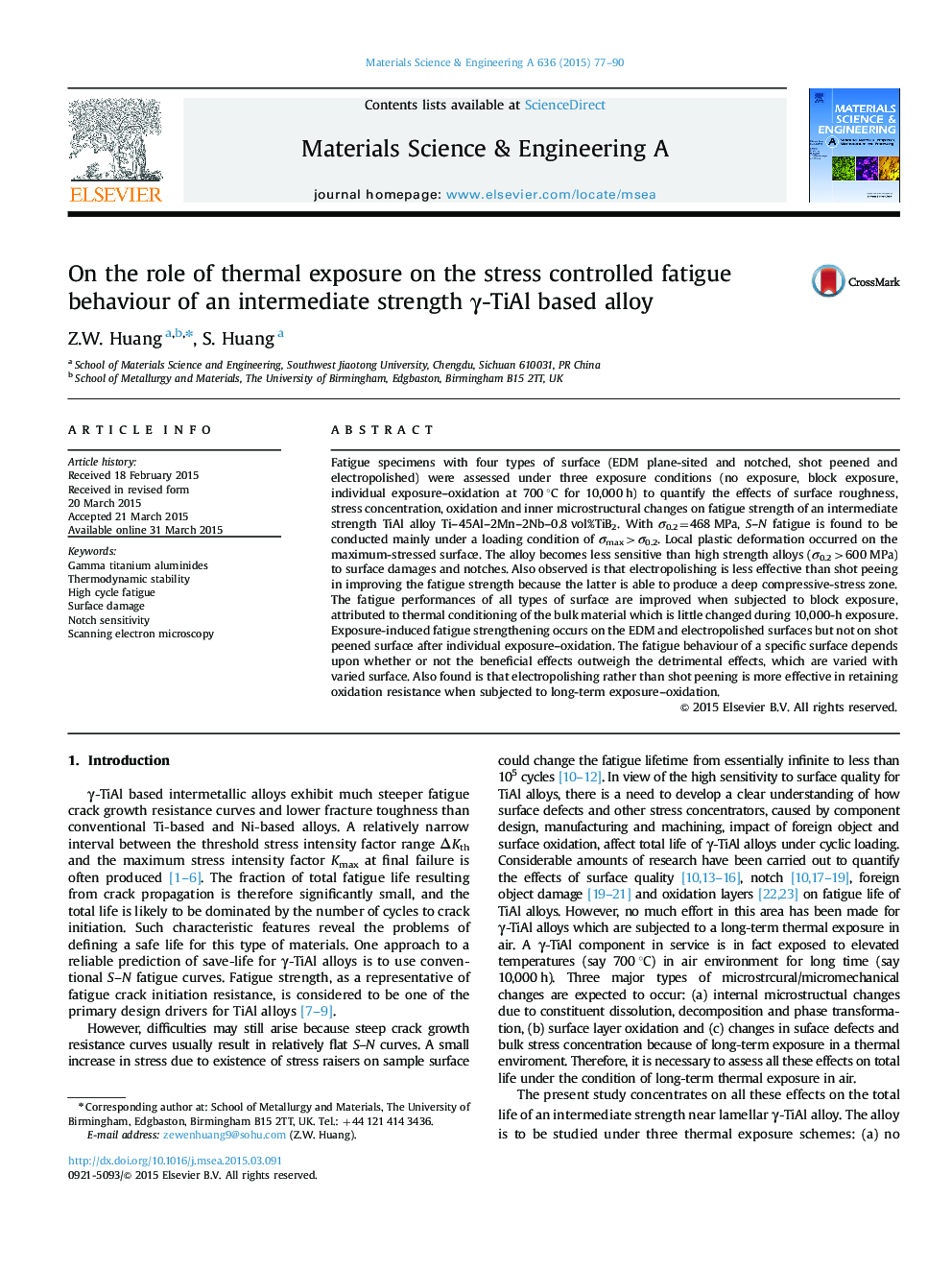| Article ID | Journal | Published Year | Pages | File Type |
|---|---|---|---|---|
| 1574206 | Materials Science and Engineering: A | 2015 | 14 Pages |
Abstract
Fatigue specimens with four types of surface (EDM plane-sited and notched, shot peened and electropolished) were assessed under three exposure conditions (no exposure, block exposure, individual exposure-oxidation at 700 °C for 10,000 h) to quantify the effects of surface roughness, stress concentration, oxidation and inner microstructural changes on fatigue strength of an intermediate strength TiAl alloy Ti-45Al-2Mn-2Nb-0.8 vol%TiB2. With Ï0.2=468 MPa, S-N fatigue is found to be conducted mainly under a loading condition of Ïmax>Ï0.2. Local plastic deformation occurred on the maximum-stressed surface. The alloy becomes less sensitive than high strength alloys (Ï0.2>600 MPa) to surface damages and notches. Also observed is that electropolishing is less effective than shot peeing in improving the fatigue strength because the latter is able to produce a deep compressive-stress zone. The fatigue performances of all types of surface are improved when subjected to block exposure, attributed to thermal conditioning of the bulk material which is little changed during 10,000-h exposure. Exposure-induced fatigue strengthening occurs on the EDM and electropolished surfaces but not on shot peened surface after individual exposure-oxidation. The fatigue behaviour of a specific surface depends upon whether or not the beneficial effects outweigh the detrimental effects, which are varied with varied surface. Also found is that electropolishing rather than shot peening is more effective in retaining oxidation resistance when subjected to long-term exposure-oxidation.
Keywords
Related Topics
Physical Sciences and Engineering
Materials Science
Materials Science (General)
Authors
Z.W. Huang, S. Huang,
